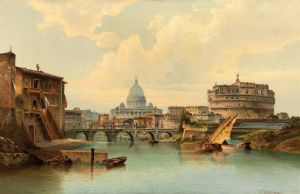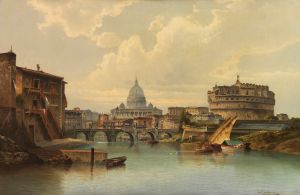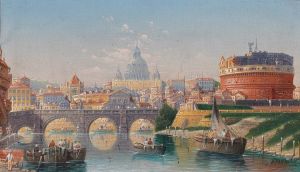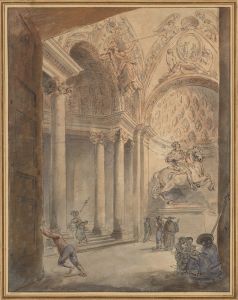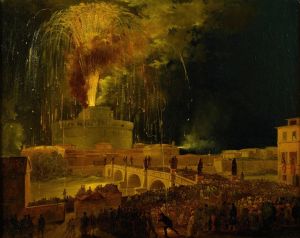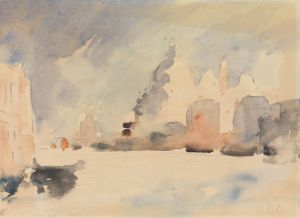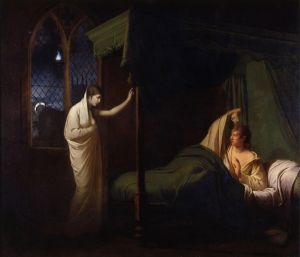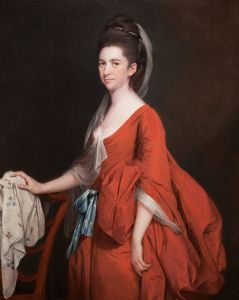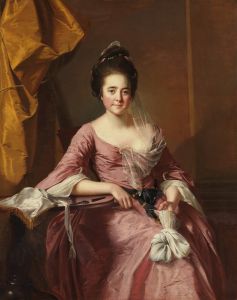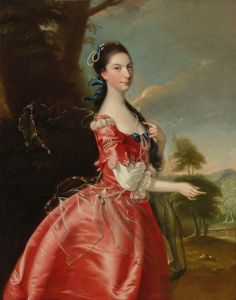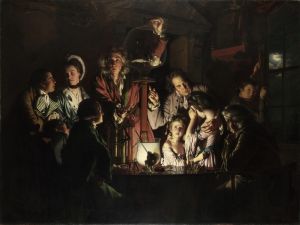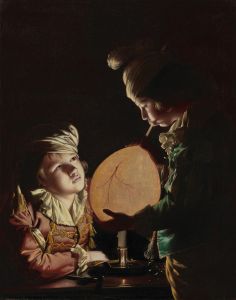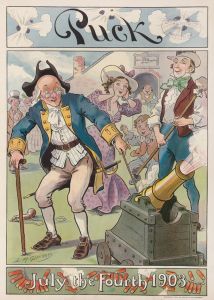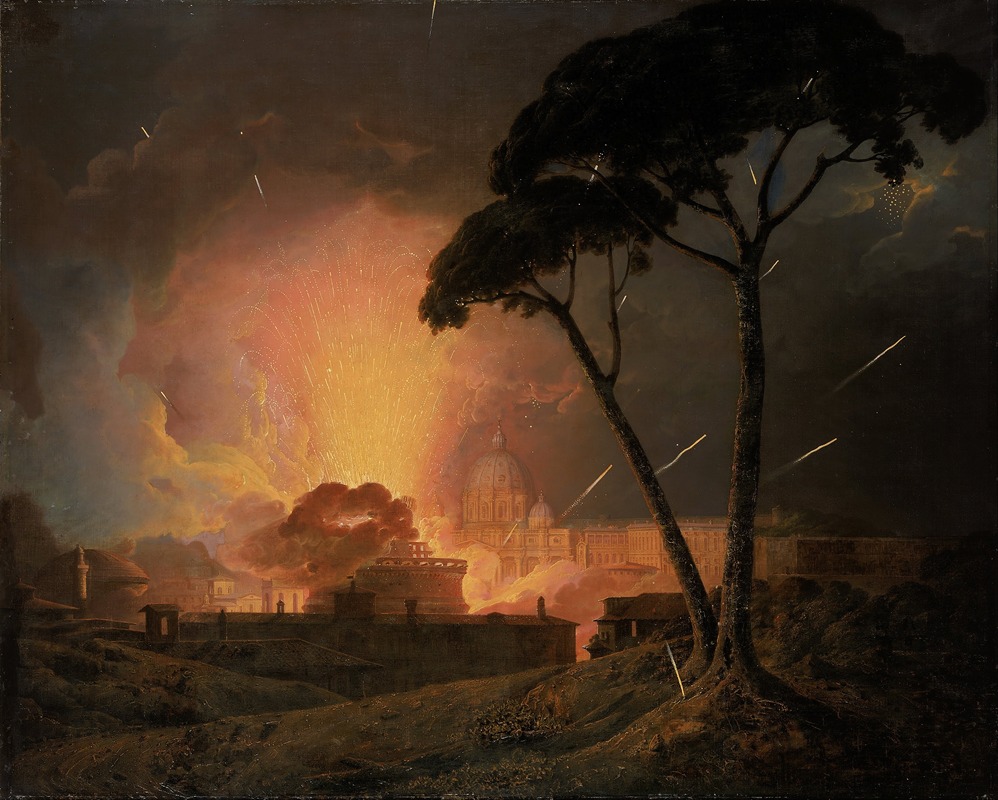
The Annual Girandola at the Castel Sant’Angelo, Rome
A hand-painted replica of Joseph Wright of Derby’s masterpiece The Annual Girandola at the Castel Sant’Angelo, Rome, meticulously crafted by professional artists to capture the true essence of the original. Each piece is created with museum-quality canvas and rare mineral pigments, carefully painted by experienced artists with delicate brushstrokes and rich, layered colors to perfectly recreate the texture of the original artwork. Unlike machine-printed reproductions, this hand-painted version brings the painting to life, infused with the artist’s emotions and skill in every stroke. Whether for personal collection or home decoration, it instantly elevates the artistic atmosphere of any space.
Joseph Wright of Derby's painting "The Annual Girandola at the Castel Sant’Angelo, Rome" is an evocative depiction of a historical event that captures the grandeur and spectacle of 18th-century Rome. Joseph Wright, an English landscape and portrait painter, is renowned for his dramatic use of light and shadow, a technique known as chiaroscuro, which he employs masterfully in this work.
The painting illustrates the Girandola, a famous fireworks display that took place annually in Rome. This event was traditionally held at the Castel Sant'Angelo, a towering cylindrical building initially constructed as a mausoleum for the Roman Emperor Hadrian and later repurposed as a fortress and castle by the popes. The Girandola was a significant social and cultural event, attracting visitors from across Europe who marveled at the elaborate pyrotechnics.
Wright's painting captures the moment with vivid intensity, focusing on the interplay of light and darkness. The fireworks illuminate the night sky, casting reflections on the Tiber River and highlighting the architectural features of the Castel Sant'Angelo. The scene is bustling with spectators, depicted in various states of awe and excitement, which adds a dynamic human element to the composition.
Wright's interest in scientific and industrial themes is evident in his fascination with light, which is a recurring motif in his body of work. This painting is no exception, as it explores the transformative power of artificial light in a natural setting. The Girandola, with its explosive bursts of color and light, serves as a perfect subject for Wright's artistic exploration of these themes.
The painting is also notable for its historical context. During the 18th century, Rome was a hub of artistic and cultural activity, drawing artists, writers, and intellectuals from across Europe. Wright's visit to Italy between 1773 and 1775 was part of the Grand Tour, a traditional journey through Europe undertaken by many young European men of means to complete their education. This experience profoundly influenced Wright's work, as he absorbed the rich artistic heritage and vibrant cultural life of Italy.
"The Annual Girandola at the Castel Sant’Angelo, Rome" is a testament to Wright's ability to capture the essence of a moment and convey the emotional impact of a shared public experience. The painting remains an important example of Wright's work and a valuable historical record of a celebrated Roman tradition.
Today, Joseph Wright of Derby is celebrated for his contributions to the art world, particularly his innovative use of light and his ability to convey complex themes through his paintings. "The Annual Girandola at the Castel Sant’Angelo, Rome" stands as a significant piece within his oeuvre, reflecting both his technical skill and his deep engagement with the cultural and scientific currents of his time.





